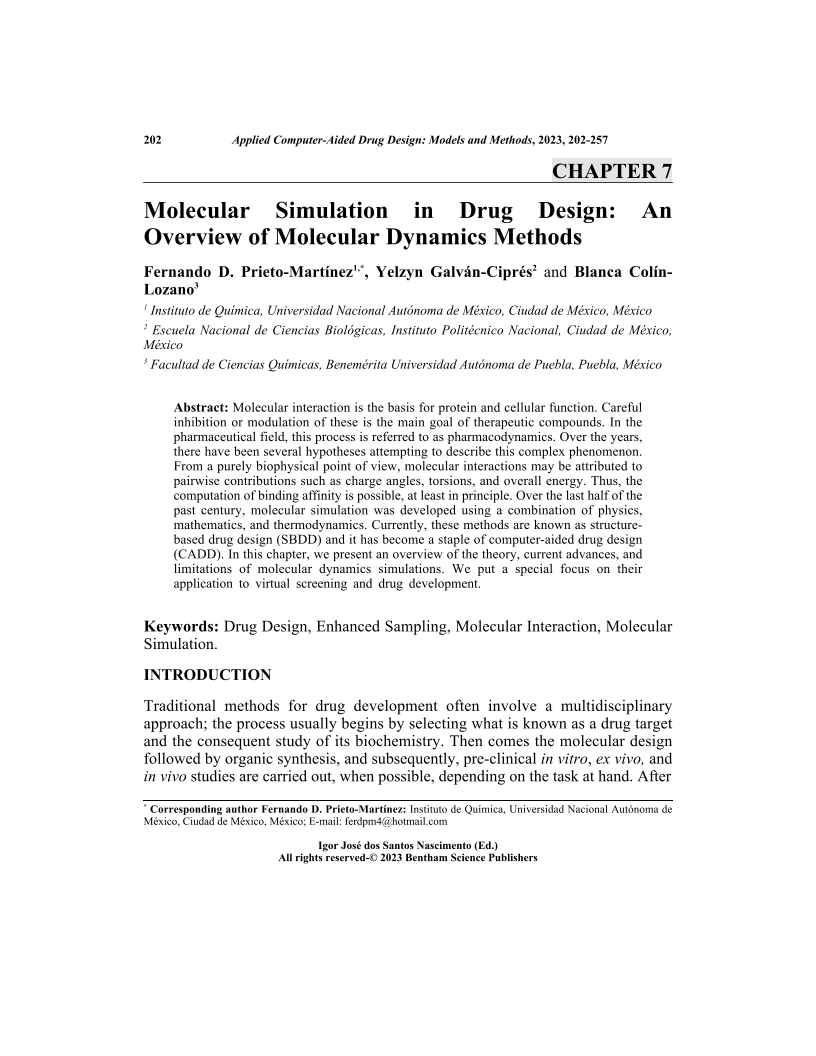Molecular Simulation in Drug Design: An Overview of Molecular Dynamics Methods

- Authors: Fernando D. Prieto Martínez1, Yelzyn Galván-Ciprés2, Blanca Colín-Lozano3
-
View Affiliations Hide Affiliations1 Instituto de Qumica, Universidad Nacional Autnoma de Mxico, Ciudad de Mxico, Mxico 2 Escuela Nacional de Ciencias Biolgicas, Instituto Politcnico Nacional, Ciudad de Mxico, Mxico 3 Facultad de Ciencias Qumicas, Benemrita Universidad Autnoma de Puebla, Puebla, Mxico
- Source: Applied Computer-Aided Drug Design: Models and Methods , pp 202-257
- Publication Date: December 2023
- Language: English
Molecular Simulation in Drug Design: An Overview of Molecular Dynamics Methods, Page 1 of 1
< Previous page | Next page > /docserver/preview/fulltext/9789815179934/chap7-1.gif
Molecular interaction is the basis for protein and cellular function. Careful inhibition or modulation of these is the main goal of therapeutic compounds. In the pharmaceutical field, this process is referred to as pharmacodynamics. Over the years, there have been several hypotheses attempting to describe this complex phenomenon. From a purely biophysical point of view, molecular interactions may be attributed to pairwise contributions such as charge angles, torsions, and overall energy. Thus, the computation of binding affinity is possible, at least in principle. Over the last half of the past century, molecular simulation was developed using a combination of physics, mathematics, and thermodynamics. Currently, these methods are known as structure-based drug design (SBDD) and it has become a staple of computer-aided drug design (CADD). In this chapter, we present an overview of the theory, current advances, and limitations of molecular dynamics simulations. We put a special focus on their application to virtual screening and drug development. <br>
-
From This Site
/content/books/9789815179934.chap7dcterms_subject,pub_keyword-contentType:Journal -contentType:Figure -contentType:Table -contentType:SupplementaryData105

